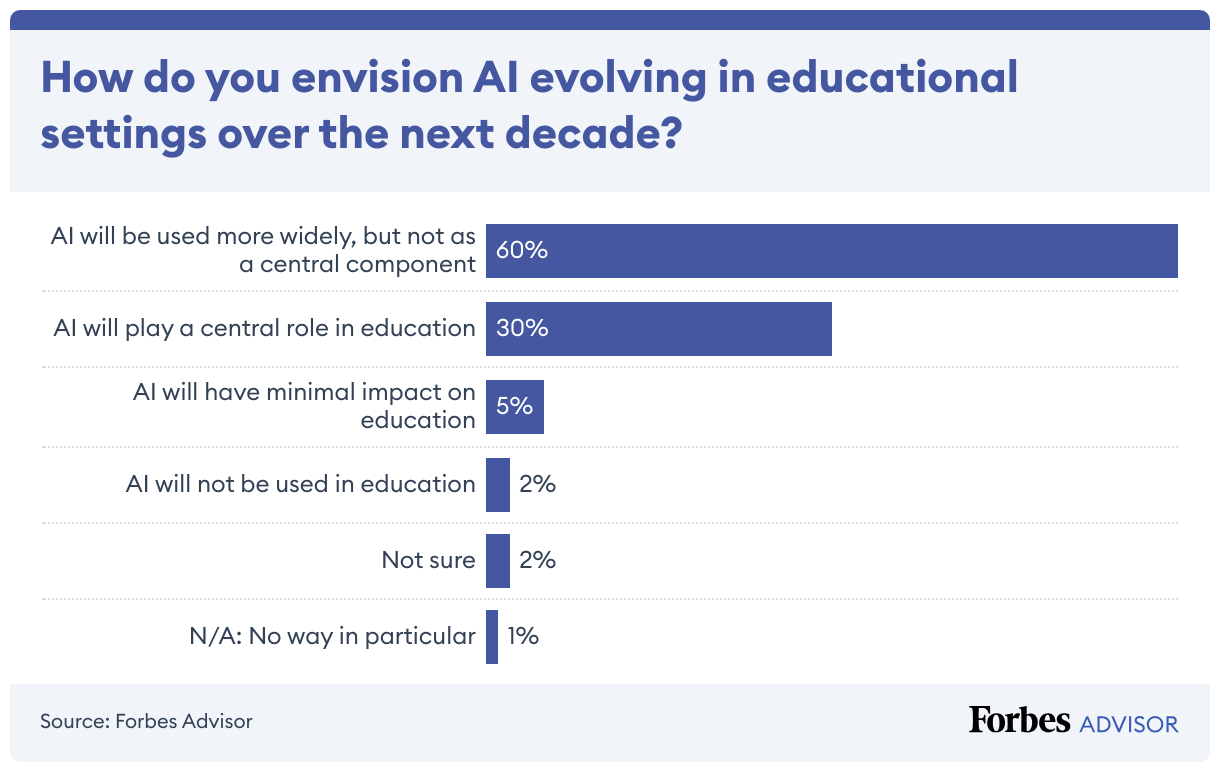The Future of EdTech in 2025: Transformative Trends Shaping Higher Education
The landscape of higher education is rapidly evolving, and as we look toward 2025, several trends in educational technology (EdTech) are set to redefine the learning experience for both professors and students. Here’s an exploration of these trends, highlighting how they can transform the educational experience.
1. AI-Powered Learning Platforms
Artificial Intelligence (AI) is poised to revolutionize higher education by personalizing learning experiences and improving student outcomes. AI-powered learning platforms can analyze student performance data to identify strengths and weaknesses, allowing for tailored instructional content. This individualized approach helps students learn at their own pace and receive the specific support they need to succeed.
For instance, AI-driven tools can provide real-time feedback on assignments, suggest additional resources, and even predict student performance, enabling early intervention for those at risk of falling behind. As AI technology continues to advance, we can expect these platforms to become even more sophisticated, offering deeper insights and more effective learning strategies.
OpenAI introduced ChatGPT Edu in May 2024, a version of ChatGPT designed for higher education institutions. It offers enhanced security, privacy, and education-relevant features like document summarization and the ability to build and share customized GPT models.
2. Virtual and Augmented Reality (VR/AR)
Virtual and Augmented Reality (VR/AR) are no longer just buzzwords in the EdTech space; they are becoming integral to how students engage with course material. These immersive technologies provide a hands-on learning experience, allowing students to explore complex concepts in a 3D environment. For example, medical students can practice surgeries in a virtual operating room, while architecture students can walk through their designs before they are built.
By 2025, the use of VR/AR in higher education is expected to expand even further, offering students a more interactive and engaging way to learn. These technologies will not only enhance understanding but also make learning more accessible, particularly in remote or underserved areas.
3. Gamification and Simulation-Based Learning
Gamification and simulation-based learning are powerful tools for making education more engaging and effective. By incorporating game-like elements into the learning process, such as points, badges, and leaderboards, educators can motivate students to participate actively and persist through challenging tasks.
Simulation-based learning, in particular, offers a unique opportunity for students to apply theoretical knowledge to real-world scenarios in a risk-free environment. One notable example is Medica Scientific by Processim Labs, a simulation game designed for higher education students in the field of operations management.
Additionally, the company developed other simulations: Bindz, SimuNation, Supply Grain, and Operations Management Basic, each of which developed important skills.
This type of experiential learning is expected to become increasingly popular as universities seek to prepare students for the complexities of the modern workforce.
Medica Scientific´s screen
4. Blockchain Technology for Credentialing
Blockchain technology, best known for its role in cryptocurrency, is making its way into higher education as a secure and transparent method for credentialing. By using blockchain to store and verify academic credentials, universities can ensure the authenticity of degrees, certificates, and transcripts. This not only streamlines the verification process but also reduces the risk of fraud.
In addition to credentialing, blockchain can facilitate the creation of digital portfolios that allow students to showcase their work and achievements in a verified format. This could prove invaluable in an increasingly competitive job market, where employers are looking for verifiable skills and experiences.
5. Data-driven decision-making with Learning Analytics
As universities continue to collect vast amounts of data on student performance, learning analytics is becoming a critical tool for improving educational outcomes. By analyzing this data, institutions can identify trends, predict student success, and make informed decisions about curriculum design and resource allocation.
Learning analytics can also be used to personalize the educational experience, offering targeted support to students based on their individual needs. For instance, if data shows that a student is struggling in a particular area, the system can recommend additional resources or suggest tutoring services. As this technology evolves, it will become an essential component of how universities operate, ensuring that every student has the opportunity to succeed.
6. Neuroeducation
Neuroeducation, a field combining neuroscience and education, is enhancing learning processes by applying brain research insights. It aims to optimize teaching methods and improve educational outcomes by integrating brain-based strategies, cognitive training, and neurofeedback into classrooms. Neuroeducation holds the promise of revolutionizing education by making it more adaptive to individual needs and fostering deeper engagement with learning.
7. The Shift Towards Hybrid Learning Models
One of the impacts of the COVID-19 pandemic was to quicken the acceptance of hybrid learning models. This trend is expected to continue as students and educators recognize the benefits of flexible learning environments. By 2025, hybrid models will likely become the norm, allowing students to access quality education regardless of their location.
For professors, this shift presents both challenges and opportunities. They will need to develop skills in online teaching and leverage technology to create engaging, interactive learning experiences that resonate with students in both settings. Institutions that invest in training and resources for faculty will be better positioned to thrive in this new educational landscape.
8. Collaborative Online Learning Platforms
Collaborative online learning platforms are transforming the educational landscape, fostering engagement and enhancing the learning experience for students and educators alike. These platforms facilitate teamwork and knowledge sharing, allowing learners to interact in real-time or asynchronously, thus bridging the gap between traditional classroom settings and remote education. Tools like Slack, Padlet, and Mural empower users to brainstorm, share ideas, and create content collaboratively, promoting a culture of active participation and critical thinking. As we move forward, the integration of these platforms into higher education will not only enhance academic performance but also prepare students for the collaborative nature of the modern workforce. Embracing such technologies is essential for universities aiming to cultivate a dynamic learning environment that meets the needs of today's learners.
9. Sustainability and Green EdTech
Green EdTech is transforming higher education, preparing students and faculty for a future centered on environmental responsibility. Universities integrate sustainable practices into curricula, fostering eco-consciousness through energy-efficient technologies, digital resources, and learning environments. Collaborative platforms enable real-world environmental challenges. As demand for green skills increases, universities must empower students to be proactive agents of change, enhancing the educational experience and contributing to a sustainable future.
As we approach 2025, the trends outlined in this blog are set to redefine the landscape of higher education. From AI-powered learning platforms to blockchain credentialing, these innovations promise to make education more personalized, accessible, and effective. For professors and university students alike, staying informed about these trends is crucial to thriving in the ever-changing world of academia.
By embracing these transformative technologies, universities can create a more dynamic and supportive learning environment, preparing students for the challenges and opportunities of the future.
For more insights on innovative educational tools, visit Processim Labs and stay ahead of the curve in the rapidly evolving world of EdTech.




